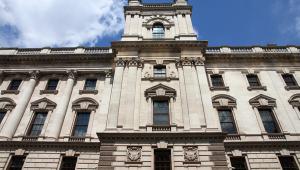It’s not surprising that public spending and fiscal deficits have taken centre stage in the election campaign. Politicians are battling to convince not only voters but also the markets that they can address the need for a major fiscal consolidation post-election. When even the Bank for International Settlements chastises governments and points out that ‘drastic measures’ are needed to check the build-up of debt, we should all take notice.
PricewaterhouseCoopers’ latest analysis suggests a need for further fiscal tightening of around £30bn over the period up to 2015/16. This is to eliminate the current structural budget deficit within a timescale that the international capital markets will demand. Clearly the bulk of that tightening will take the form of a mixture of further spending cuts and higher taxes.
But an alternative to further tax rises would be to raise revenue by charging for services provided by the public sector. The use of top-up charges by government has so far received little attention.
Yet it is an area where the UK raises less revenue as a percentage of gross domestic product than comparable Organisation for Economic Co-operation and Development nations such as Australia and Canada. This was set out in our report, Time to choose: decision-making in an age of fiscal austerity.
The report shows that the revenue raised by charges in the UK is lower than in these other countries to the tune of almost 3% of GDP; interestingly, the same amount by which PwC believes the fiscal stance will need to be further tightened.
There are, of course, plenty of services that already have their costs covered, at least in part by charges: drug prescriptions, university tuition fees and paying for leisure facilities come readily to mind.
Transport also demonstrates how extensive charges can become, from parking fees (and fines) and workplace levies to congestion charging in London and toll roads and bridges.
Charging is not a panacea and many will point out that it is inappropriate for many services and for users unable to pay at the point of need. But if the UK could generate top-up income at similar levels to Australia and Canada, why should it not be actively considering this?
There are other reasons to consider as well as raising revenue. For instance, charging is a mechanism to manage demand and therefore the costs of providing services, and change behaviour through incentives, such as charging for missed GP appointments.
There are, however, downsides, including political difficulties, administrative costs and issues of fairness. In particular, charges are potentially regressive unless there is flexibility in the structure, including free minimum provision and offsetting changes to the benefits system for those in most need.
One solution would be to differentiate between essential and discretionary services. There could be a choice of top-ups for ‘premium’ services, such as higher fees for faster provision of services. The experience of low-cost airlines such as Ryanair shows us that charges for add-ons such as speedy boarding will be tolerated, but can be resented if they are seen as extra fees for basic services.
Such a regime is also already in place in parts of the public sector, as demonstrated by the passports system, where fees can be paid to the Post Office to check passport applications and to the Identity and Passport Service for a faster service.
To date, there has been limited debate on the pros and cons of charging. Indeed, it is a hardly a vote winner to raise charges as well as cutting public spending and increasing taxes.
But with the imminent onset of public sector recession, now is a time for politicians and public sector leaders to be brave and examine this option afresh as part of their battle to beat the deficit.











